Viral rashes
Peer reviewed by Dr Rosalyn Adleman, MRCGPLast updated by Dr Toni Hazell, MRCGPLast updated 20 Oct 2023
Meets Patient’s editorial guidelines
- DownloadDownload
- Share
- Language
- Discussion
In this series:MeaslesChickenpox in childrenChickenpox in adults and teenagersScarlet feverHand, foot and mouth diseaseSchool exclusion for infections
Many viral infections can cause a rash in addition to other symptoms. Rashes are very common with viral infections, especially in young children. It is very important to make sure the rash is not part of a serious infection - eg, meningococcal infection which is a bacterial infection and can be associated with meningitis.
In this article:
If you or your child suddenly develops a rash that does not disappear with the glass test, you should call 999 or attend the nearest Emergency Department straight away.
Continue reading below
What is a viral rash?
The symptoms caused by viral infections can vary depending upon the virus. One of the symptoms that may occur is a rash. There are some well-known viral rashes.
For example, the measles virus and the chickenpox virus cause characteristic rashes along with other symptoms. Sometimes a typical rash helps a doctor to diagnose which virus is causing an illness.
Measles

CDC/NIP/Barbara Rice, Public domain, via Wikimedia Commons
Other viral rashes include:
Rubella
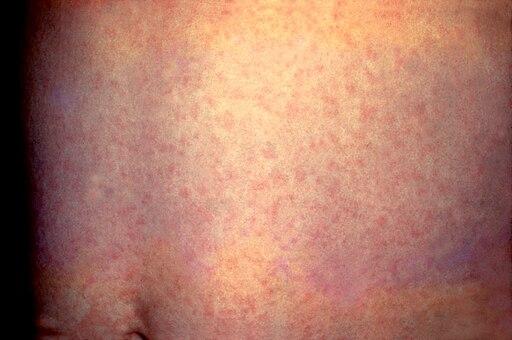
Photo Credit:Content Providers(s): CDC, Public domain, via Wikimedia Commons
Shingles
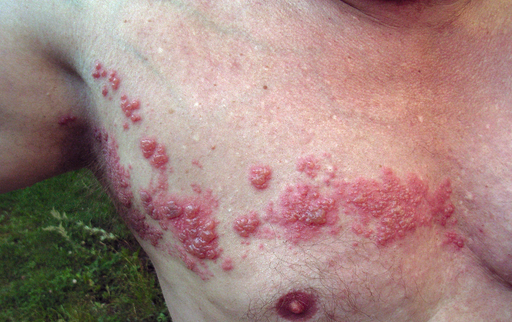
Fisle, CC BY-SA 3.0, via Wikimedia Commons
Hand, foot, and mouth disease.
Hand, foot and mouth disease
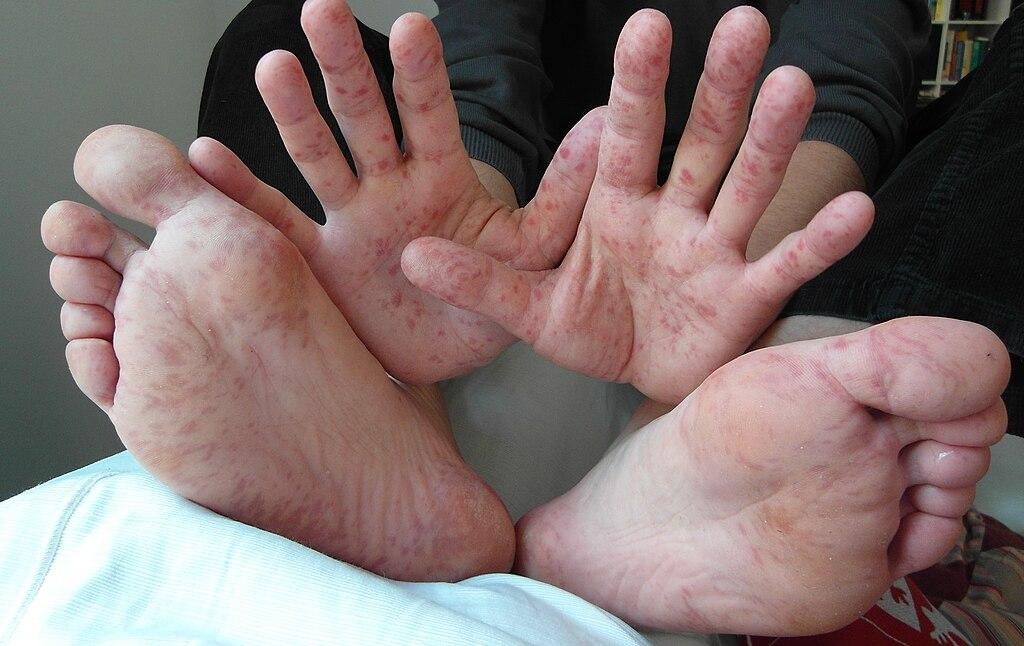
KlatschmohnAcker, CC BY-SA 3.0, via Wikimedia Commons
Fifth disease (slapped cheek disease).
Slapped cheek
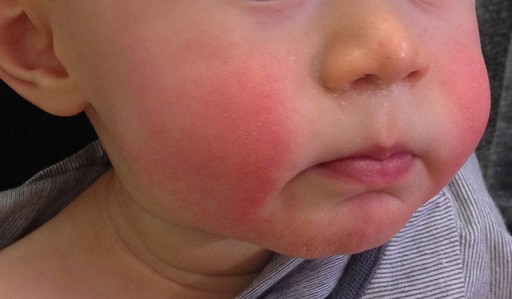
Gzzz, CC BY-SA 4.0, via Wikimedia Commons
Roseola
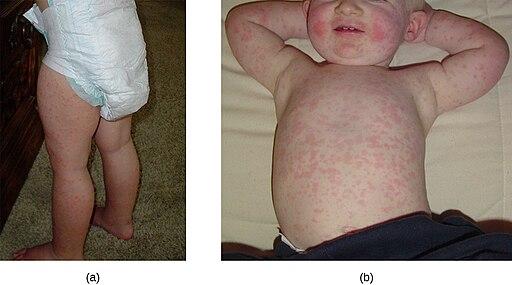
CNX OpenStax, CC BY 4.0, via Wikimedia Commons
Child with chickenpox
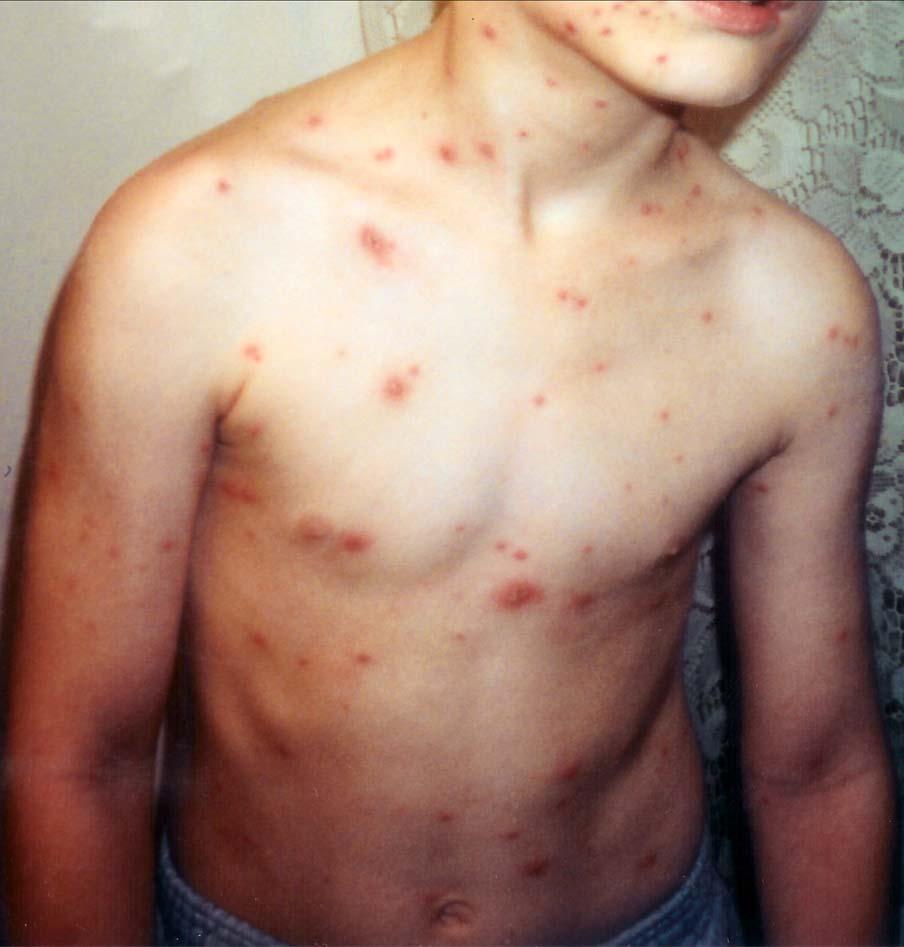
For those who have recently travelled abroad, there are many other possible causes of a viral rash, including those transmitted by mosquitos, eg, West Nile virus, Zika virus, and dengue fever.
Many viruses can cause a rash in addition to other symptoms such as high temperature (fever) and cough. Many of these rashes are 'nonspecific'. This means the rash is not specific or characteristic enough to identify the virus that is causing the rash.
The doctor cannot say which virus is the culprit, but can say that some virus is a likely cause of the rash.
What do viral rashes look like?
Viral rashes vary in shape and size. However, they often appear as blotchy red spots. Commonly they affect most of your body.
Sometimes they appear dramatically. For example, you may wake up in the morning to find yourself covered in a rash.
How long do they last?
It usually lasts only a few days. Sometimes the rash is slightly itchy. Usually the rash disappears without trace within a few days. There is a great variety of types.
Conditions mistaken for a viral rash
Some skin conditions, such as eczema or hives (urticaria), can cause rashes that look similar to a viral rash.
Are viral rashes serious?
Most viral rashes are not serious. They clear up on their own without any treatment. However, rashes may much less often be caused by serious virus infections such as HIV and those transmitted by mosquitos when travelling abroad.
Therefore, it is very important to make sure the rash is not part of a serious virus infection, or any other serious cause, such as meningococcal infection, which is caused by a bacterial infection.
Other signs suggestive of meningococcal infection in babies and young children include becoming floppy and unresponsive, unusual crying, being very sleepy and having a very high temperature (fever).
The rash of meningococcal infection is usually purple or red spots that don't fade when put under pressure (for example, by pressing a clear glass against your skin).
Glass test for meningitis rash

What matters is whether other symptoms or problems occur. For example, the measles virus can cause a nasty illness with a chest infection, severe diarrhoea, etc, in addition to a rash.
However, many viruses cause only minor symptoms - perhaps a mild fever or slight cough - but the rash may look quite dramatic. Sometimes the rash appears just as the other symptoms are improving.
Viral rashes and pregnant women
Most viral infections causing a rash will do no harm to your developing baby. However, some may do. For example, the rubella (German measles) virus and chickenpox. In particular, if you catch chickenpox in pregnancy and have not had it before, you should seek advice from your midwife urgently (usually via the maternity day unit), as you may need treatment to protect your baby.
It is therefore often best for pregnant women to avoid people who have an infectious rash. Also, if you are pregnant and develop a rash, it is advisable to see a doctor for advice.
Continue reading below
Should I worry about a viral rash?
The sudden appearance of a widespread blotchy rash is quite common. It is often due to a viral infection. It is the other symptoms that may be of more concern. If other symptoms are mild then there is usually little to worry about. It will usually go in a few days.
Viral rash treatment
There is no specific treatment for the rash itself. Treatment should be aimed at the other symptoms. For example, paracetamol can be used for a high temperature (fever). Some conditions which cause a rash, such as measles, can be extremely dangerous and cause severe illness and death. It is therefore very important to be vaccinated against these conditions - vaccinations are safe and do not cause autism.
Rashes that are itchy often respond to an antihistamine tablet which can be obtained from your doctor or a chemist. There are also various creams available which can work to reduce itching.
When to see a doctor or nurse about viral rashes
If you have any concerns then you should contact a doctor immediately. It’s always a good idea to talk with a healthcare professional when you notice a new rash. It is important to make an appointment if:
You feel generally unwell or feverish.
The rash lasts longer than a week, especially if it doesn’t seem to be improving.
The rash starts to blister.
The rash spreads rapidly or is all over your body.
The rash shows signs of redness, swelling, and oozing.
The rash is painful.
The are any concerns that the rash may indicate a serious illness.
Patient picks for Skin infections

Infections
Mpox virus
Mpox, previously known as monkeypox, is a viral infection caused by the mpox (monkeypox) virus. It is very similar to the smallpox virus but causes fewer deaths. It was previously thought not to be very infectious but it seems to be spreading more easily in recent years. There is an effective vaccine that works against smallpox which also works against mpox.
by Dr Philippa Vincent, MRCGP

Infections
Warts and verrucas
Warts are usually harmless but may be unsightly. Warts on the feet are called verrucas (or verrucae) and are sometimes painful. Warts and verrucas usually clear in time without treatment. If required, they can often be cleared more quickly with treatment. Most commonly, treatment involves applying salicylic acid or freezing with liquid nitrogen or a cold spray.
by Dr Doug McKechnie, MRCGP
Further reading and references
- Viral skin infections; DermNet NZ
- Viral rash in pregnancy; UK Health Security Agency.
- Fever in under 5s: assessment and initial management; NICE Guidance (last updated November 2021)
Continue reading below
Article history
The information on this page is written and peer reviewed by qualified clinicians.
Next review due: 18 Oct 2028
20 Oct 2023 | Latest version

Ask, share, connect.
Browse discussions, ask questions, and share experiences across hundreds of health topics.

Feeling unwell?
Assess your symptoms online for free
Sign up to the Patient newsletter
Your weekly dose of clear, trustworthy health advice - written to help you feel informed, confident and in control.
By subscribing you accept our Privacy Policy. You can unsubscribe at any time. We never sell your data.